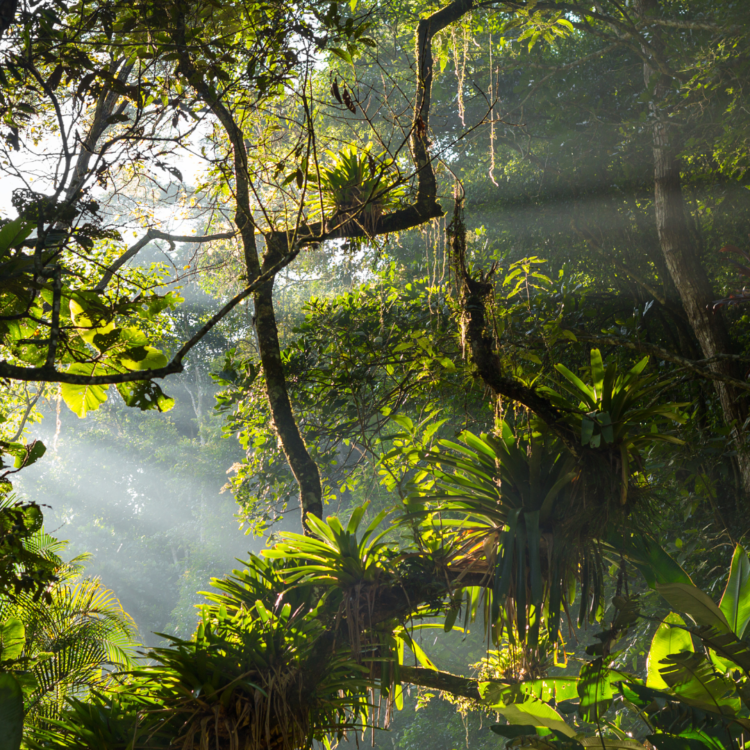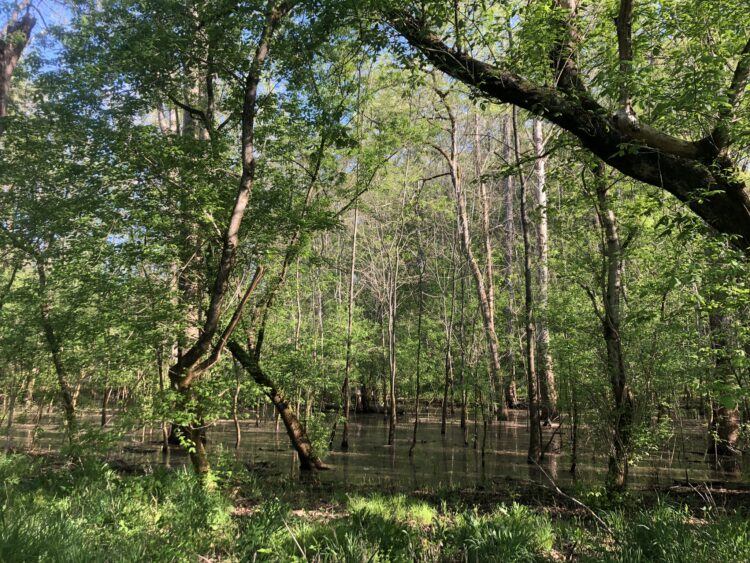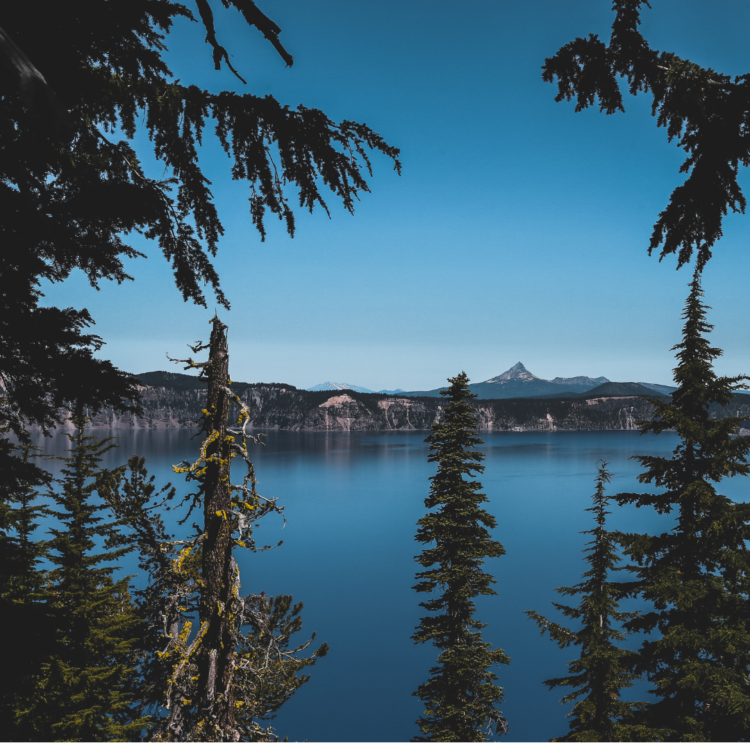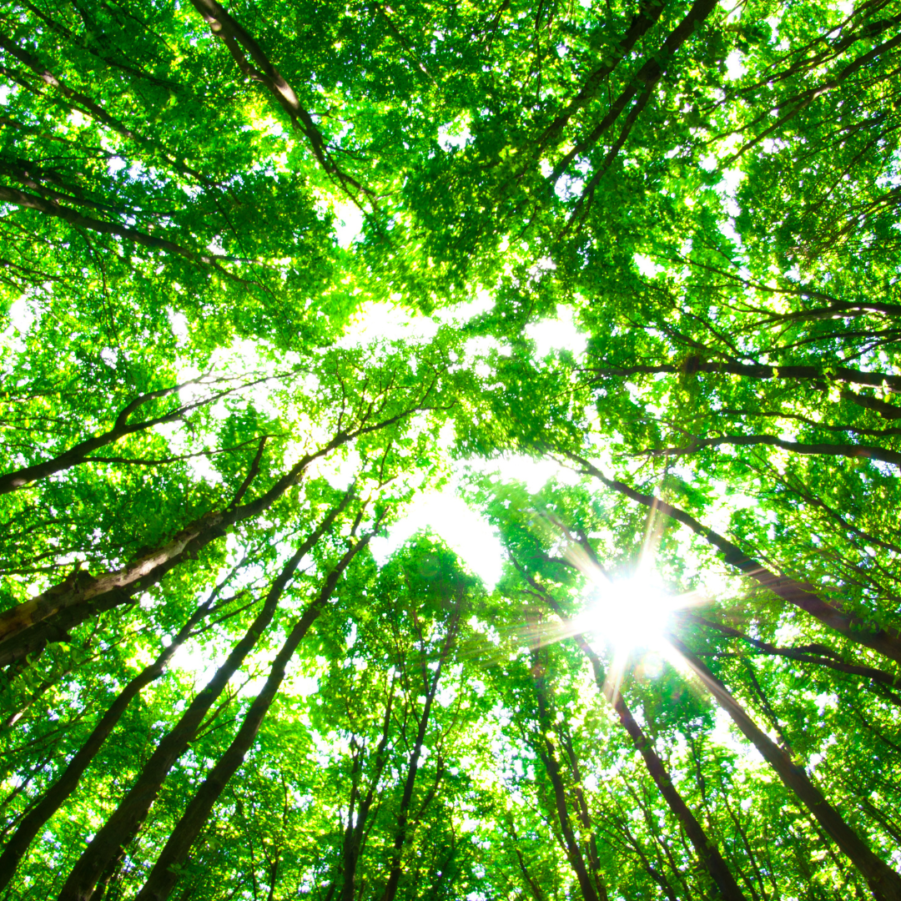Forests are perhaps the most iconic and recognized biome on Earth. When most people hear the word nature, a forest is what comes to mind. And with good reason! Forests make up around 1/3 of all the land on Earth. Meanwhile, all of those trees are the foundation of many land-based food chains. At the same time, people all over the world are clearing forest for things like cattle ranching or industrial agriculture. In 2020, people cut down 67 million acres (26 million hectares) of woodland. That’s an area more than half the size of California! Numbers like these lead some people to rather important questions. If there’s so much forest out there, do we really need it all? Why do we need forests in the first place?
In this Deep Stuff post, let’s explore 6 major reasons why we need forests.
Paper and wood

One of the first answers that should jump to mind is wood products. Forests are still our only source of this durable, sustainable, biodegradable building material. In a time when much of the world is overwhelmed with massive amounts of plastic waste, paper and wood products are especially important. Also unlike most plastics, paper and wood can be more easily recycled, reducing waste.
Although it seems counterproductive, the wood product industry can protect woodlands to ensure its future supply. This leads more responsible companies to protect and manage areas of forest rather than cut them all down. When the trees are gone, the wood is too, and forests are still the only game in town.
New medicines

Forests are hotspots for natural innovation. In other words, nature’s ability to invent new structures and chemicals through diverse species is on full display in these habitats. In fact, they hold the majority of terrestrial (land-based) species. As I described in my recent TEDx talk, we learn important lessons from nature all the time. This is especially true in the pharmaceutical industry.
The ongoing chemical arms-races between bugs, fungi, plants, lichens, and other organisms has produced an incredible variety of bio-active chemicals. Among these are thousands if not millions that have medicinal uses. While indigenous peoples have used plant medicines for as long as anyone can remember, the medical industry is also on board. In fact, 1/3 or more of all new medicines come from products in nature. Without forests, chances are we would be losing the fight against major illnesses like heart disease and cancer.
They protect our water

All life on Earth relies on water. As indigenous people around the world have said for millennia, water is life. Forests play an important role in protecting water and giving people access to clean water. First, tree roots and the rich soils and leaf litter that woodlands produce holds sediment in place. This means that when it rains, potentially harmful chemicals and clay particles don’t contaminate rivers, reservoirs, and groundwater that people rely on.
Secondly, those same soils and the rich web of underground forest life within them act as a giant filter. In other words, forests clean water as it percolates down through the trees and the forest floor below.

Third, forests also slow water down. When rain falls on a forested landscape, more of it ends up in groundwater, rather than in streams. That water then becomes available in the future, providing a longer-term source of water that keeps rivers wet in the dry season, and prevents droughts. This sponge-like behavior of forests also prevents floods. The forests absorb water and then release it slowly over a longer period where it can be useful for people and wildlife, rather than causing harmful flooding.
Finally, in many parts of the world, tress actually make it rain. As plants like trees photosynthesize, they suck up water to convert gas from the atmosphere into sugars using the sun’s energy. In the process, they pull moisture from the soil and it evaporates from their leaves into the surrounding air. At large scales, all of this evapotranspiration comes together in clouds and rains down elsewhere on the landscape. Sadly, there are many documented cases in Mediterranean and tropical climates where people suffered from huge droughts after clearing large tracts of forest.
Forests cool down cities

Heat waves are becoming more common and more extreme every year. This is becoming a major health problem, especially in cities, where many people don’t have easy ways to escape the heat. Scientists actually call cities heat islands for how they store and accumulate heat during warm periods. People in heat islands can suffer heatstroke, heat exhaustion, and severe heart problems that get more risky with longer exposure.
Fortunately, forests can combat this heat island effect. They do this by shading areas from the harsh rays of the summer sun, and by absorbing solar radiation through their leaves. As they pump water into the air via photosynthesis, it also cools the local climate. During a major heat wave, areas shaded by trees can be 20 to 45 degrees F (11-25°C) cooler than unshaded areas! Keeping forests around, especially in urban areas, can save lives, and lower a lot of electricity bills.
Forests regulate our climate

The world’s forests play a massive role in creating the agreeable climate that has supported human societies throughout all of history. Part of this comes from the way they regulate water, as I described above. Beyond that, they also control the amount of carbon dioxide in the atmosphere, which determines how much solar heat lingers in our atmosphere.
When plants produce sugars using the sun’s energy through photosynthesis, they get the carbon atoms that they need to do that from the air. That’s right—it’s weird to think about, but most of the actual matter that makes up any plant comes from the air, not from minerals in the ground. Specifically, plants pull in carbon dioxide from the air, and then use those carbons like Lego building blocks to create all kinds of chemical structures. In turn, these chemical structures function as food for the plant, as well as consumers like us, our livestock and our pets.
All of the huge, heavy biomass of wood and accumulated leaflitter in forests is actually carbon from the atmosphere. To make all those huge trees in a forest, their cells are pulling massive amounts of carbon from the atmosphere. This in turn helps regulate Earth’s atmospheric carbon, which itself manages average temperatures and prevents harmful extremes. They are so effective at doing this that many organizations are using forest restoration as a way to keep atmospheric carbon levels from getting too high.
They boost our mental and physical health

Woodlands and other natural environments are healthy to be around. Dozens of medical studies have shown that access to forests benefits people’s mental and bodily health. Proximity to forests even correlates strongly with lower death rates from COVID-19. The increasingly popular Japanese practice of Shinrin-yoku or forest bathing reduces risks from a wide variety of health problems and doctors worldwide have begun prescribing it to their patients. For more info on how forests and other natural habitats promote our health, check out my post series on Nature and Health.
Want to learn more?
Here are some book recommendations for further reading about trees, forests, and their amazing natural history. Let me know if I missed any of your favorites!
- Into the Forest: The Secret Language of Trees by Susan Hitchcock – Gorgeous photographs and a great summary of forest ecology from throughout the world.
- The Hidden Life of Trees by Peter Wohlleben – A New York Times best seller and fantastic introduction to the science of trees.
- Forest Walking by Peter Wohlleben – A naturalists’ guide to getting more from every walk in the woods and learning to look at forests in a new way.
- The Tree: A Natural History of What Trees Are, How They Live, and Why They Matter by Colin Tudge – An entertaining global perspective on trees that gets into how trees do what they do without, as it were, ‘missing the forest for the trees’.
Thanks for reading!
What kinds of contributions has nature made to your life? Share with us in the comments! If you have additional questions or topics you’d like to see explored on Gulo in Nature, drop me a message using the Contact page.

